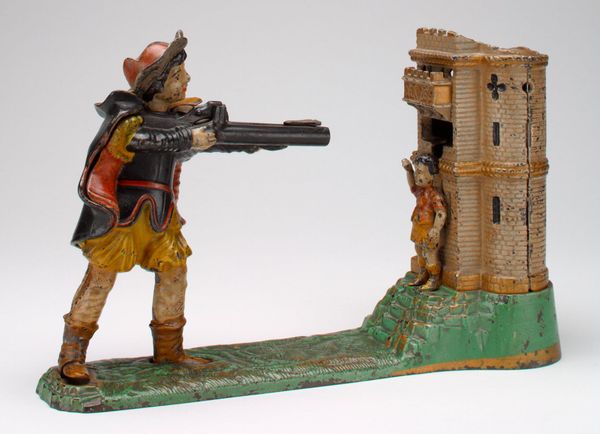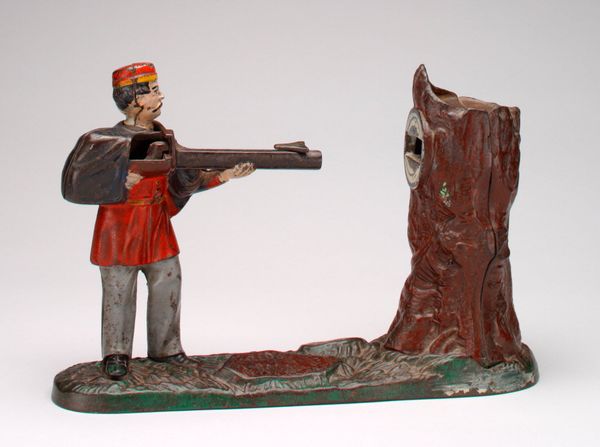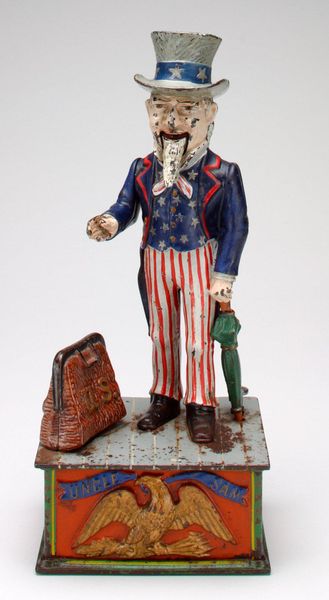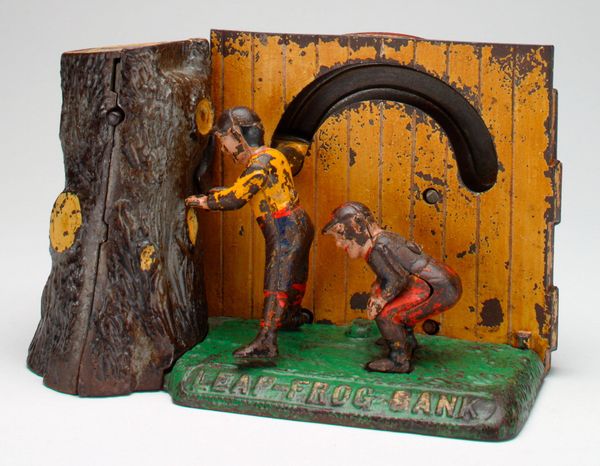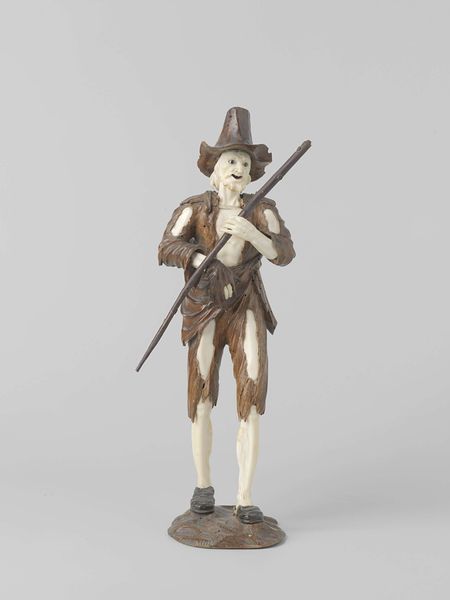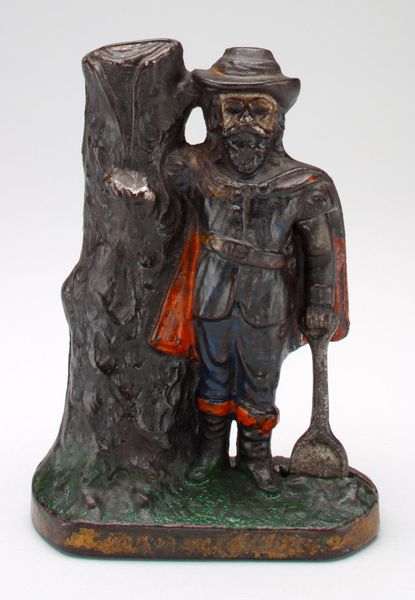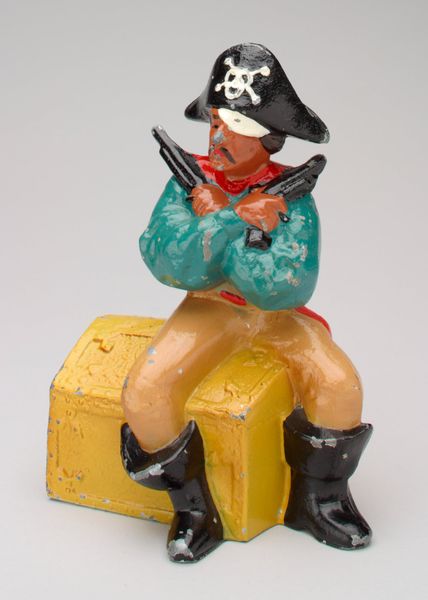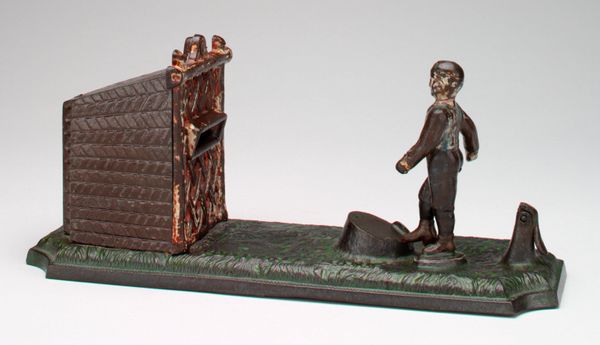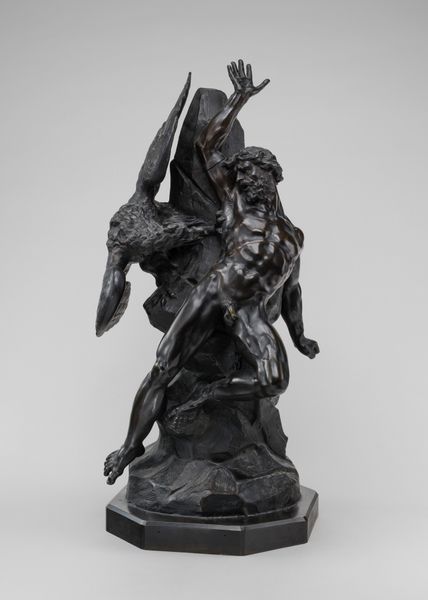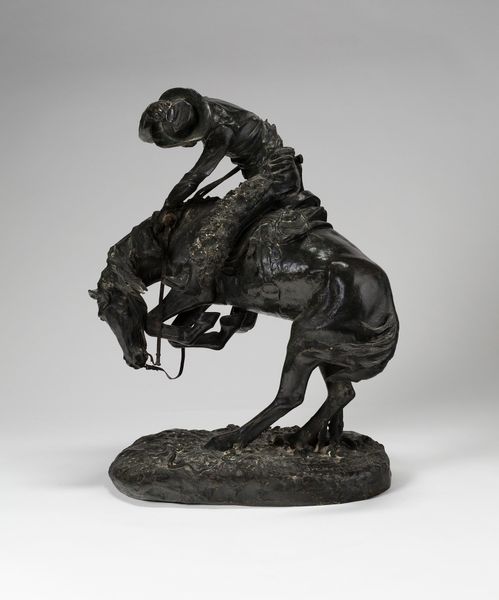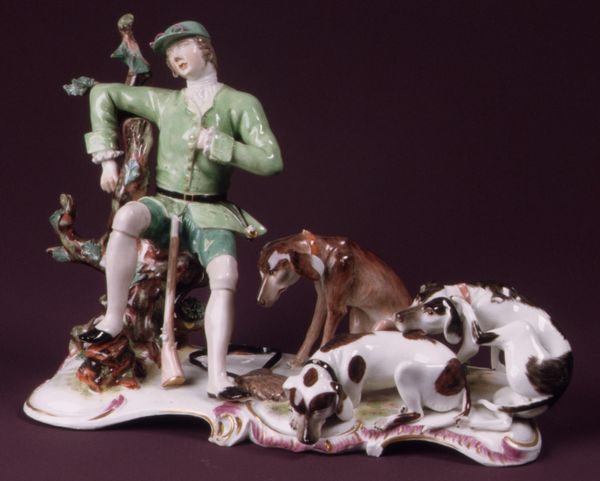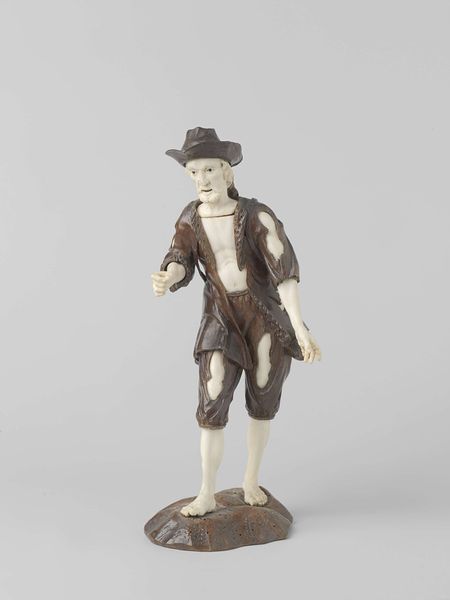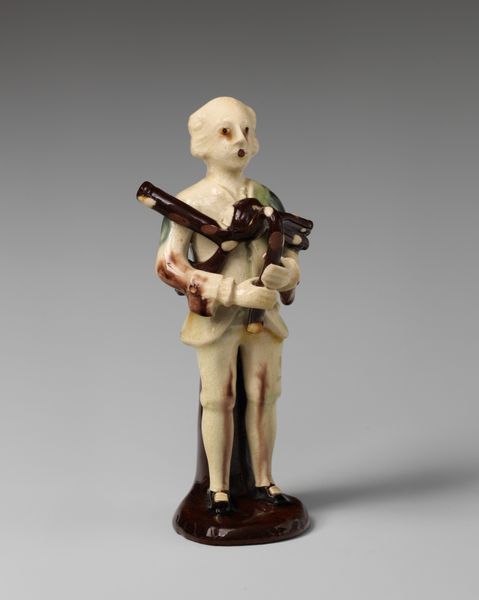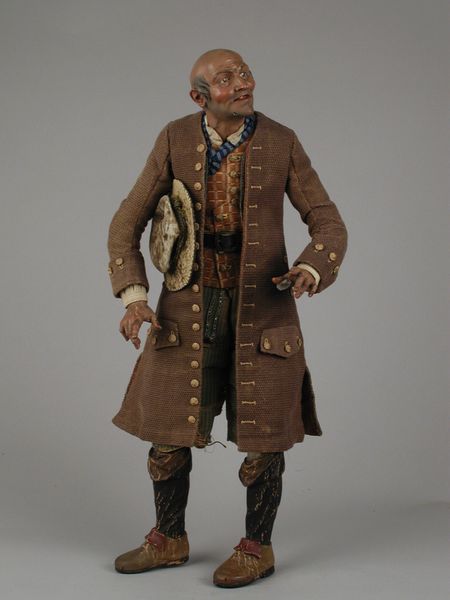
metal, sculpture
#
metal
#
sculpture
#
figuration
#
sculpture
Dimensions: 6 3/4 x 10 3/16 x 2 11/16 in. (17.15 x 25.88 x 6.83 cm)
Copyright: Public Domain
Curator: This fascinating object is called "-New Creedmoor- mechanical bank." It dates back to about 1891. Editor: It’s so...grim. Like childhood and warfare oddly colliding. All those hard edges, and the oddly stiff posture of the marksman...it almost has a toy-like quality and it does actually make me think about violence and saving at the same time! Curator: Exactly! It's made of painted metal, likely cast iron. Mechanical banks like this were designed to encourage saving, often with a performative element. The act of depositing a coin becomes a miniature drama. Editor: A drama involving weaponry and…tree stumps? I mean, that aim, that serious little face – and is he aiming at that tree? It has such a stark, storybook feel that could maybe serve as metaphor. It must be quite fun and intriguing to use though! Curator: The mechanics are intriguing. When a coin is placed in the rifle, a lever is triggered, causing the figure to “fire” at the tree, depositing the coin inside. Consider the historical context: late 19th-century America, with its growing industrialization and a rising middle class keen on teaching children about thrift and patriotism. Editor: Thrift, yes, and perhaps subtly acclimating them to...marksmanship? This little bank says a lot about those times. Look how cleverly that figure is fashioned: a brave posture while standing on what is perhaps a mound and aiming at…well, that little gap in the stump. You start wondering who invented these kind of games. Curator: These banks served as tools of social conditioning, reflecting societal values regarding labor, capital, and even military prowess. The materiality of cast iron, the mass production...it's all part of the message. This item isn't just kitsch; it's material culture, encapsulating the anxieties and aspirations of a particular era. Editor: That’s so very accurate, material culture. These little treasures become very loaded time capsules when analyzed from today’s perspectives. Thank you for pointing those key components to appreciate about this piece. I came away feeling much more contemplative.
Comments
No comments
Be the first to comment and join the conversation on the ultimate creative platform.
